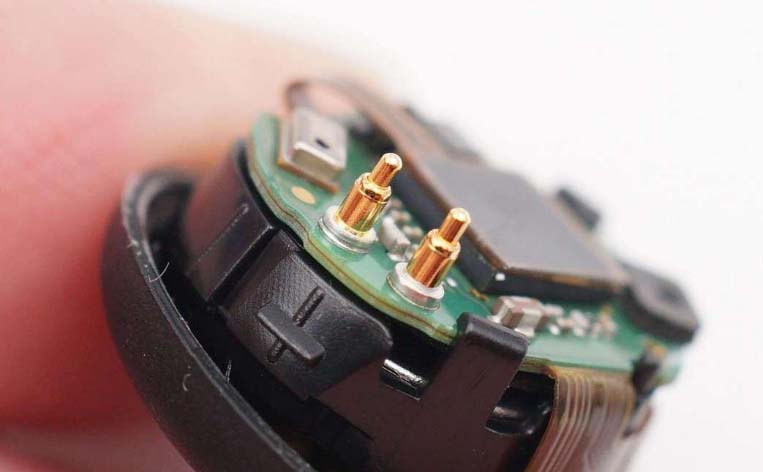News classification
Contact us
- Add: ChanFu Dong Road,XiaoBian Village, ChangAn Town,DongGuan City,GuangDong,China
- Tel: +8613652508770(Jerry )
- Fax: 0769-23094426
- Email: [email protected]
Why can't the Pogo pin be soldered?
Why can't the Pogo pin be soldered?

The core reason why Pogo pins cannot be soldered is the mismatch between the characteristics of the contact material, surface treatment process, and solder requirements. This, coupled with structural design limitations and improper operation, leads to ineffective solder adhesion or functional failure after soldering.
I. The Inherent Contradiction Between Core Materials and Surface Treatment
The contact ends (probe tips, pin tubes) of Pogo pin are often made of precious metals or special alloys to ensure conductivity, wear resistance, and elasticity.
Common materials such as beryllium copper and phosphor bronze inherently lack good solderability. Their surfaces oxidize rapidly, forming an oxide film that hinders solder wetting during soldering.
Surface treatments are often gold, palladium, or rhodium plating. These precious metals are chemically stable and have extremely low affinity for tin alloys. Solder cannot form an effective metallurgical bond, achieving only physical adhesion, which is easily detached.
Some products undergo passivation treatment to improve corrosion resistance. This passivation layer directly isolates the solder from the substrate, preventing solder adhesion entirely.
II. Structural Design Limitations on Soldering
The precision structure of Pogo pins inherently conflicts with the soldering process.
The probe tips are mostly spherical or pointed, with a small contact area, making it difficult to form sufficient solder buildup during soldering, thus compromising solder strength.
Internal elastic components such as springs are present; the high temperatures during soldering (typically above 230°C) can cause the springs to temper, altering their elasticity and causing the probe's extension/retraction function to fail.
The extremely small clearance between the needle tube and the probe itself allows solder to seep into the interior, causing the probe to jam and preventing proper extension/retraction.
Some miniaturized Pogo pins have compact lead or mounting positions, lacking sufficient solder space, making them prone to bridging or cold solder joints during operation.
III. Impact of Improper Soldering Process and Operation Even if the materials and structure allow, errors in process selection or operation can lead to soldering failure.
Mismatched solder and flux: Ordinary Sn-Pb or lead-free solder has poor compatibility with precious metals, requiring specialized high-temperature solders and a highly active flux to remove the oxide film; otherwise, wetting will not be possible.
Improper temperature control: Too low a temperature prevents complete solder melting, while too high a temperature damages the surface plating and internal structure, accelerating substrate oxidation.
Excessive soldering time: Prolonged high temperatures cause plating diffusion, intensified substrate oxidation, and may deform the probe, further affecting soldering results and product functionality.
Inadequate pre-soldering treatment: Failure to remove surface oil, oxide layers, or passivation layers results in "floating" solder that fails to adhere.
IV. Limitations of Product Positioning and Design Intent:
The core design principles of Pogo pins magnetic connector are "pluggable, low contact resistance, and long lifespan," not adaptability to soldering processes.
Soldering can deform the probe head or pins, affecting contact stability during insertion and removal, and reducing lifespan.
The presence of solder can alter the probe's contact pressure and extension/retraction stroke, leading to decreased conductivity or unstable signal transmission.
Manufacturers typically design mounting methods for Pogo pins such as crimping, reflow soldering (for specific solder end models), or SMD surface mount. Soldering is not a recommended solution, and corresponding process adaptation designs are lacking.
V. Solutions and Alternative Approaches
If Pogo pins need to be fixed, forced soldering is not recommended. Choose more suitable methods:
Select dedicated models with pads or leads. Manufacturers have optimized surface treatments (e.g., localized tin plating) and structures, supporting reflow or wave soldering.
Use crimping, clip-on fixing, or PCB via positioning, combined with conductive adhesive or springs to enhance connection stability.
If soldering is necessary, the surface plating must be removed first (e.g., through polishing or chemical etching). Use dedicated solder and flux, and strictly control the temperature (below 250℃) and soldering time (within 3 seconds). However, this will sacrifice the original performance and lifespan of the product.
The inability to solder Pogo pins is a result of a combination of factors, including materials, structure, and manufacturing processes. Forced soldering is not only unlikely to succeed but may also damage product functionality. Choosing a suitable mounting method or dedicated model is key to ensuring reliable connections.


